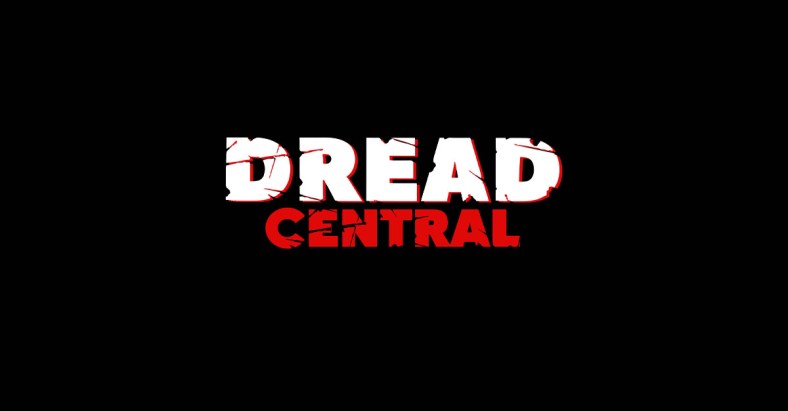SCARY STORIES TO TELL IN THE DARK Review – Childhood Terrors Faithfully Recreated

Starring Zoe Margaret Colletti, Michael Garza, Gabriel Rush
Written by Dan Hageman, Kevin Hageman
Directed by André Øvredal
Much like 2015’s Goosebumps, André Øvredal’s Scary Stories to Tell in the Dark follows a group of teenagers who play around with a book that they have no business touching. By doing so, they unknowingly unleash a terrible force that they must figure out how to contain. While both R.L. Stine’s series and Alvin Schwartz’s collection of folklore-inspired tales are aimed at younger audiences, Goosebumps plays directly into its intended audience while Scary Stories to Tell in the Dark is hesitant, unsure if it is too scary for children and not scary enough for adults. While it doesn’t commit to either audience, it is still a treat for both.
Øvredal, whose previous works include the imaginative Trollhunter and the fantastically eerie The Autopsy of Jane Doe, doesn’t shy away from the notoriety of the books and, specifically, Stephen Gammell’s controversial art. Knowing that those images scarred generations of children and also aware that those same people are now adults with children of their own, the specters we see here are faithful adaptations of the ones we grew up with. The Dream shuffles through a psychiatric hospital’s hallways with a ghastly wide grin. The Big Toe is as stomach-churning as one would expect and the portrayal of Mama‘s Javier Botet as the toeless woman is delightfully spooky. The Void‘s Troy James shines as The Jangly Man, his chaotic movements genuinely unnerving.
Each character is a manifestation of the main cast’s nightmares, made real by the haunted writings of Sarah Bellows, a local urban legend in her own right. As we learn, Sarah was born with a physical malformation, one that saw her family feel great shame and the misguided need to hide her away. When she learned of their terrible secret, she attempted to reveal the truth to the rest of the town, only to be tortured and maligned at the hands of her immediate relatives. As her story unfolds for the cast and audience alike, the movie keeps sneaking in snippets of Nixon’s presidential race and news segments of the Vietnam War, a thematic representation of the abuse of youth that this film embodies throughout. Sarah’s suffering, Stella’s familial trauma, Ramón’s stone-faced acceptance of racism and profiling, the young who were drafted against their will into a war they had no business being a part of, all examples of the horrors children go through that older generations simply pass off as, “Well, that’s life.”
While Øvredal’s direction and the Hageman Brothers’ script touch upon these underlying themes, they definitely play second fiddle to the film’s laser-focused intent to make this film feel as faithful to the book as possible. David Brisbin’s production design and Patricia Larman’s set decoration ooze atmosphere while Marco Beltrami and Anna Drubich’s score breathes life into each character. The creature designs are spot on and it’s a pure delight seeing them grace the screen.
Furthermore, Øvredal makes the wise decision of realizing that a monster doesn’t lose its ability to strike fear once it is exposed. Rather, by lingering on their designs and focusing on the tension of the situation, each creature remains scary throughout.
The editing, however, could use a little work. There’s a scene where the main group of kids runs from some bullies. The chase goes from an alley between two houses in a suburban neighborhood to a dense, foggy forest without any transition, followed by the kids running next to a drive-in theater that doesn’t have much in the way of trees around it. Immediately after this poor sequence of cuts, we enter the drive-in where the movie playing is, naturally, Night of the Living Dead. The scenes from Romero’s film we see as this sequence begins – Harry and Helen in the basement – take place after the scene at the end – Barbara climbing the stairs and finding the corpse. A small thing, to be sure, but one that frustrates nonetheless.
The film feels itself oddly restrained, as though it wasn’t sure if it was being too scary for young kids, and therefore needed to pull back, or not scary enough for adults, so let’s make it more gruesome. The Red Spot goes from queasy body horror to barely lit spider frenzy. The Jangly Man’s rotting, dismembered limbs roll and flail around to become whole – an undoubtedly macabre sight – yet its speech feels strangely comical.
Oddly enough, this disconnect feels strangely appropriate. When one considers the controversy of the Schwartz/Gammell version of Scary Stories to Tell in the Dark, the concern was more about the images than the story. So on one hand, you had horror stories that were rather tame, but on the other hand, you had images that were clearly inappropriate for the intended audience. And so, in a respect, the movie is a perfect adaptation.
It’s important to step back and think about the intended audience, much like how I need to think about how I view Schwartz’s stories now versus when I was a young boy. Øvredal’s film isn’t aimed at the same crowd that he sought with The Autopsy of Jane Doe. That simply wouldn’t make sense. If he and the rest of the cast/crew had the intention of making a kickass horror movie for the teenage audience, then they can rest well knowing that they succeeded. Schwartz and Gammell should be feeling a great deal of pride right about now.
-
Scary Stories to Tell in the Dark
Summary
Øvredal’s Scary Stories to Tell in the Dark hits nearly all the right notes. While it may be too scary for young children on their own, a family Halloween movie night with this would certainly be a hit.
Categorized:Reviews


